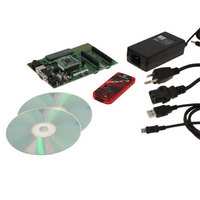DV164136 Microchip Technology, DV164136 Datasheet - Page 194

DV164136
Manufacturer Part Number
DV164136
Description
DEVELOPMENT KIT FOR PIC18
Manufacturer
Microchip Technology
Series
PIC®r
Type
MCUr
Datasheets
1.DM183032.pdf
(38 pages)
2.DV164136.pdf
(448 pages)
3.DV164136.pdf
(6 pages)
4.DV164136.pdf
(446 pages)
5.DV164136.pdf
(4 pages)
6.DV164136.pdf
(18 pages)
Specifications of DV164136
Contents
Board, Cables, CDs, PICkit™ 3 Programmer, Power Supply
Processor To Be Evaluated
PIC18F8722, PIC18F87J11
Interface Type
RS-232, USB
Operating Supply Voltage
3.3 V, 5 V
Silicon Manufacturer
Microchip
Core Architecture
PIC
Core Sub-architecture
PIC18
Silicon Core Number
PIC18F
Silicon Family Name
PIC18F8xxx
Kit Contents
PIC18 Exp Brd PICkit 3 Cable CD PSU
Lead Free Status / RoHS Status
Lead free / RoHS Compliant
For Use With/related Products
PIC18F8722, PIC18F87J11
Lead Free Status / Rohs Status
Lead free / RoHS Compliant
Available stocks
Company
Part Number
Manufacturer
Quantity
Price
Company:
Part Number:
DV164136
Manufacturer:
MICROCHIP
Quantity:
12 000
- DM183032 PDF datasheet
- DV164136 PDF datasheet #2
- DV164136 PDF datasheet #3
- DV164136 PDF datasheet #4
- DV164136 PDF datasheet #5
- DV164136 PDF datasheet #6
- Current page: 194 of 446
- Download datasheet (7Mb)
PIC18F8722 FAMILY
18.1.3
Like the standard CCP modules, the ECCP modules
can utilize Timers 1, 2, 3 or 4, depending on the mode
selected. Timer1 and Timer3 are available for modules
in Capture or Compare modes, while Timer2 and
Timer4 are available for modules in PWM mode.
Additional details on timer resources are provided in
Section 17.1.1
Resources”.
18.2
With the exception of the Special Event Trigger
discussed below, the Capture and Compare modes of
the ECCP modules are identical in operation to that of
CCP4. These are discussed in detail in Section 17.2
“Capture
Mode”.
18.2.1
The Special Event Trigger output of ECCPx resets the
TMR1 or TMR3 register pair, depending on which timer
resource is currently selected. This allows the CCPRx
registers to effectively be 16-bit programmable period
registers for Timer1 or Timer3.
18.3
When configured in Single Output mode, the ECCP
module functions identically to the standard CCP
module in PWM mode as described in Section 17.4
“PWM Mode”. This is also sometimes referred to as
“Compatible
through 18-3.
18.4
The Enhanced PWM mode provides additional PWM
output options for a broader range of control applica-
tions. The module is a backward compatible version of
the standard CCP module and offers up to four outputs,
designated PxA through PxD. Users are also able to
select the polarity of the signal (either active-high or
active-low). The module’s output mode and polarity
are configured
CCPxM<3:0>
(CCPxCON<7:6> and CCPxCON<3:0>, respectively).
DS39646C-page 192
Note:
Capture and Compare Modes
Standard PWM Mode
Enhanced PWM Mode
ECCP MODULES AND TIMER
RESOURCES
SPECIAL EVENT TRIGGER
When setting up single output PWM
operations, users are free to use either of
the processes described in Section 17.4.3
“Setup
Section 18.4.9 “Setup for PWM Opera-
tion”. The latter is more generic, but will
work for either single or multi-output PWM.
Mode”
CCP”
bits
by
“CCP
and
for
setting
of
mode
the
Section 17.3
Modules
PWM
the
as
CCPxCON
Operation”
PxM<1:0>
in
and
Tables 18-1
“Compare
register
Timer
and
or
For the sake of clarity, Enhanced PWM mode operation
is described generically throughout this section with
respect to ECCP1 and TMR2 modules. Control register
names are presented in terms of ECCP1. All three
Enhanced modules, as well as the two timer resources,
can be used interchangeably and function identically.
TMR2 or TMR4 can be selected for PWM operation by
selecting the proper bits in T3CON.
Figure 18-1 shows a simplified block diagram of PWM
operation. All control registers are double-buffered and
are loaded at the beginning of a new PWM cycle (the
period boundary when Timer2 resets) in order to
prevent glitches on any of the outputs. The exception is
the PWM Dead-Band Delay register, ECCP1DEL,
which is loaded at either the duty cycle boundary or the
boundary period (whichever comes first). Because of
the buffering, the module waits until the assigned timer
resets instead of starting immediately. This means that
Enhanced PWM waveforms do not exactly match the
standard PWM waveforms, but are instead offset by
one full instruction cycle (4 T
As before, the user must manually configure the
appropriate TRIS bits for output.
18.4.1
The PWM period is specified by writing to the PR2
register. The PWM period can be calculated using the
following equation:
EQUATION 18-1:
PWM frequency is defined as 1/[PWM period]. When
TMR2 is equal to PR2, the following three events occur
on the next increment cycle:
• TMR2 is cleared
• The ECCP1 pin is set (if PWM duty cycle = 0%,
• The PWM duty cycle is copied from CCPR1L into
the ECCP1 pin will not be set)
CCPR1H
Note:
PWM Period = [(PR2) + 1] • 4 • T
PWM PERIOD
The Timer2 postscaler (see Section 14.0
“Timer2 Module”) is not used in the
determination of the PWM frequency. The
postscaler could be used to have a servo
update rate at a different frequency than
the PWM output.
(TMR2 Prescale Value)
© 2008 Microchip Technology Inc.
OSC
).
OSC
•
Related parts for DV164136
Image
Part Number
Description
Manufacturer
Datasheet
Request
R

Part Number:
Description:
Manufacturer:
Microchip Technology Inc.
Datasheet:

Part Number:
Description:
Manufacturer:
Microchip Technology Inc.
Datasheet:

Part Number:
Description:
Manufacturer:
Microchip Technology Inc.
Datasheet:

Part Number:
Description:
Manufacturer:
Microchip Technology Inc.
Datasheet:

Part Number:
Description:
Manufacturer:
Microchip Technology Inc.
Datasheet:

Part Number:
Description:
Manufacturer:
Microchip Technology Inc.
Datasheet:

Part Number:
Description:
Manufacturer:
Microchip Technology Inc.
Datasheet:

Part Number:
Description:
Manufacturer:
Microchip Technology Inc.
Datasheet:











